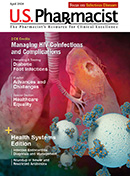Gliomas remain one of the deadliest forms of cancer in the United States, with a 5-year relative survival of only 33%. It is estimated that over 23,000 new cases of glioma were diagnosed in 2019. This disease resulted in over 17,000 deaths in this year.
A freely accessible, comprehensive database on glioma, GliomaDB, has been developed that incorporates genomic, transcriptomic, epigenomic, and clinical- and gene drug–associated data on gliobastoma multiforme and low-grade glioma. GliomaDB contains information from a plethora of databases, including The Cancer Genome Atlas, Gene Expression Omnibus (GEO), the Chinese Glioma Genome Atlas, the Memorial Sloan Kettering Cancer Center Integrated Mutation Profiling of Actionable Cancer Targets, Catalogue of Somatic Mutations in Cancer, 1000 Genomes Project, ClinVar, Genomics Data Commons data portal, the FDA, and PharmGKB.
This resource provides information on somatic mutations, gene expression, microRNA expression, and DNA methylation associated with glioma. Another useful function of GliomaDB is its ability to perform survival analysis, visualizations of coexpression network, and multiomics, as well as to offer targeted, personalized drug recommendations. This new database significantly adds to the scope of information that was previously available from such databases as GLIOMASdb, Xena, and cBioPortal. The GLIOMASdb database provides information on RNA-seq data for use in assisting with staging and disease progression, and the latter two databases provide genomics data.
Despite their availability, these tools are associated with shortcomings that limit their use such, as exclusion of databases from GEO, which is a public functional genomics data repository; circumscribed gene queries that do not contain connections between all nodes; a dearth of information on mutation status in healthy populations; inability to customize annotation of mutations for targeted drug recommendations; single variable survival analysis; and absence of microRNA expression and DNA methylation profiles.
The database is kept current with the addition of newly updated datasets. This is done using Entrez Programming Utilities provided by the National Center for Biotechnology Information. The end results of this collaborative endeavor are the inclusion of data from over 4,300 patients and over 21,400 samples. GliomaDB houses information on over 6 million single nucleotide variants, over 56,000 records on gene expression, over 1 million records on microRNA expression data, and over 184 million records on DNA methylation associated with this devastating disease. Information is also available on 77 targeted drugs.
Some of the items used to generate queries in GliomaDB are gene symbols, gene ID, chromosomal region, gene name, dbSNP accession number, methylation data, and project groups. Gene expression queries of either single or multiple genes are used to perform survival analysis to predict clinical outcomes of a given gene. Regulation relationship and network involvement may be determined by coexpression network visualization. Heatmap is used to view multiple omics data, including mutation, copy number variation, and expression profiles. GliomaDB also integrates pharmacogenomics data from the FDA and PharmaGKB to assist with the administration of personalized medicine.
This tool, which is based on a ready-to-use multiomics data approach, may be utilized by clinicians and researchers alike to take full advantage of available public genomic big data on gliomas.
« Click here to return to Hematology Update.






